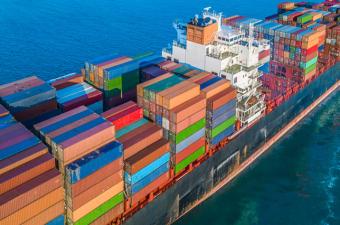
OVERVIEW
Case Note on the LADY M
Maybe because it was handed down just before Christmas or because the subject matter, barratry, may not be common, the decision of Popplewell J in the Lady M [2017] EWHC 3348, [2018] 1 Ll RP 22 has as yet attracted little attention. It does, however, merit consideration not least because of the wider implications of the judgment for the construction of the Hague/Hague-Visby defences and because it reminds us yet again of the difficulties that can arise on the trial of preliminary issues.
The Case
The case concerned a fire in the engine room of Lady M whilst she carrying a cargo of 62,250MT of fuel oil from Russia to the US. The fire did not take hold but was said to have been sufficient to immobilise the vessel such that salvage services were required and cargo interests incurred a substantial liability to the salvors. In these proceedings, cargo interests sought to claim that sum (together with associated costs and expenses) from Owners, together with a declaration of non-liability for general average. Owners counterclaimed a general average contribution.
In Owners’ defence, it was admitted that the fire had been started deliberately by a member of the crew with the intent to cause damage. Owners further contended that the culprit was the Chief Engineer and that at the time that he set the fire he was under extreme emotional stress and/or anxiety due to the illness of his mother, alternatively suffering from an unknown and undiagnosed personality order and/or mental illness.
On the basis of this admission and a set of further facts agreed for the purposes of the preliminary issues, at the CMC the Court ordered the trial of three preliminary issues, namely:
- Whether the Chief Engineer’s conduct constituted barratry;
- If so, whether Owners were precluded from relying on the exception found in Article IV Rule 2(b) for “fire”;
- If so, whether Owners were precluded from relying on the exception found in Article IV Rule 2(q) for “any other cause arising without the actual fault or privity of the carrier or without the fault or neglect of the agents or servants of the carrier…”.
On the first of these issues, having accepted at the CMC that the question posed was capable of being answered on the basis of the agreed/assumed facts, by the time of the trial, Owners contended that the Court could not in fact answer the question on the basis of their proposed definition of barratry which required an intentional fraud or crime.
Whilst the Judge rejected Owners’ argument in this regard and held that it is not necessary for the wrongful act to amount to a crime and a “fraud” is sufficient to constitute the relevant wrongdoing, he held that there must be a knowing breach of duty owed to Owners (or at least recklessness in this regard). He defined barratry as (i) a deliberate act or omission by the master, crew or other servant of the owners; (ii) which is a wrongful act or omission; (iii) to the prejudice of the interests of the owner of the ship or goods (whether or not prejudice is intended); (iv) without the privity of the owners. But in order for the act or omission to qualify as wrong for the purposes of (ii), it must be (a) what is generally regarded as a crime, including the mental element necessary to make the conduct criminal; or (b) a serious breach of duty owed by the person in question to the shipowners, committed by him knowing it to be a breach of duty or reckless whether that be so.
On this basis and given that Owners’ case had morphed into what was in effect a defence of insanity, he went on to hold that he could not decide the preliminary issue on the basis of the assumed/agreed facts and that the answer depended on further facts as to his state of mind which had not been agreed or assumed. In so holding, the Judge observed that preliminary issues which are to be determined on the basis of agreed or assumed facts are in principle capable of being answered in three ways, namely “yes”, “no” or “it depends on further facts which are outside those which have been agreed or assumed”.
It was in answering the two further issues, namely the scope and application of exceptions contained in Article IV Rule 2, that the Judge made some important findings as to the correct approach to construction of those exceptions.
In this regard, cargo interests argued that the exceptions contained within Article IV Rule 2 which were based on a series of exceptions commonly used in bills of lading before the advent of the Hague Rules, should be construed against that background and thus restrictively interpreted (as they would have been at the time). Such an approach was supported by various textbooks including the current edition of Voyage Charters and discussions recorded in the travaux preparatoires which indicate that the intention was to adopt certain of the existing exceptions commonly used by, in particular, British shipowners (which would be narrowly construed at common law) but to exclude others.
Owners argued that, based on cases such as the Limnos [2008] 2 Ll Rep 166 (which addressed provisions other than the exceptions in Article IV Rule 2), the correct approach to construction was to ascertain the ordinary meaning of the words used and to reject any reliance on the pre-existing English authorities or indeed the approach to construction which was relevant at the time that the exceptions were adopted.
Judgment
In his Judgment (but without much discussion), the Judge preferred Owners’ approach. He nevertheless also found that where there are words or expressions which had received judicial interpretation as “terms of art”, the words may be presumed to have been used in the sense already judicially imputed to them. He continued that the words must, however, be given their plain meaning without concern as to whether that involved altering the previous law.
Applying this approach, the Judge found that the word “fire” meant fire without any qualification about how the fire started, such that it covered deliberately started fires as well as those accidentally or negligently caused. Oddly, the Judge went on to find support for his finding in (amongst other things) various English cases considering the meaning of fire as an insured peril and all of which post-dated the Hague Rules. He also found that the fact that an express exemption for barratry had, by common consent, been removed from the list of permitted exceptions at the Hague Conference did not prevent a barratrous fire falling within Rule 2(b).
As the reader will appreciate, the Judge’s conclusions have a wider significance and raise a number of important issues relevant to the exceptions listed in Article IV Rule 2. Is it right, for example, that, in interpreting a set of Rules which were expressly intended to restrict the power of shipowners to limit or contract out of liability altogether, the Courts should give the exceptions to liability a wider scope than they would have had at the time that the Rules were agreed? How do you determine whether a word or expression is a “term of art”? And is it right that subsequent English caselaw has any relevance at all? The answers to these questions are not easy and will be the subject of further consideration in the Court of Appeal in this case and quite possibly by the Supreme Court in the upcoming hearing in Volcafe.
Finally
The Judge considered the scope of Article IV Rule 2(q). In so doing, he expressed “an instinctive hostility” towards interpreting the terms of the exception by reference to the English principles governing vicarious liability, as Owners submitted he was compelled to do by reason of the Court of Appeal’s Judgment in The Chyebassa. He expressed a preference for a test which focused on whether the conduct in question occurred in the course of the servant or agent performing a function that he was performing on behalf of the shipowner, deriving his authority to perform it directly or indirectly through contracts of agency or employment. However, he was able to avoid dealing with the issue by finding (without hesitation) that, whatever the correct test, Owners could not rely on the exception.


